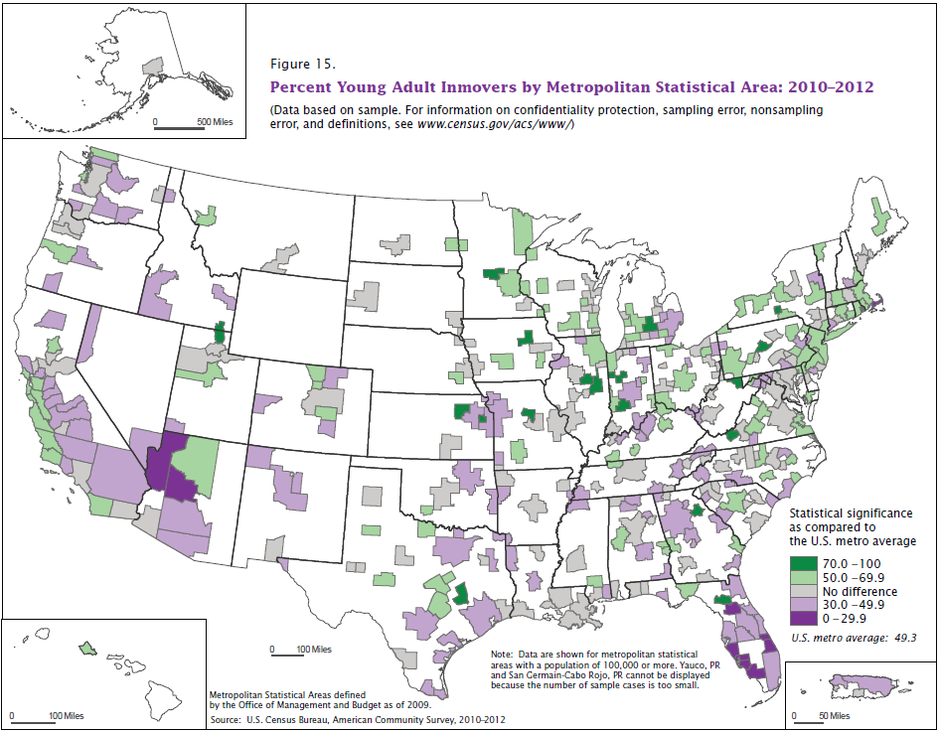The above chart is from here, an article with a bunch more charts of interest as well. The data point is 2010-2012, so technically this is three years old. (But we don’t have “large-scale” data on people who moved last week just yet, for example.) If you look at it, basically you’re looking for green pockets in terms of areas where people are moving to. You see a lot of Northeast and California, which kind of goes against the idea that people might flee coastal areas because of high cost of living. (On the flip side, you see patches of green in Texas, which aligns with their general growth.)
Said this before and I’ll say it again here — there are about 19 million reasons people move cities, typically involving “jobs” or “families,” but potentially involving a whole host of other shit. (Life is complex.) So any study of this nature — “Best Cities For Jobs For Young People,” for example, or “The 30 Fastest-Growing Cities of 2014” — need to be taken with a grain of salt. Maybe I think Phoenix is cool and becoming walkable and I have friends there, right? But if I can’t get a job there, I’m not moving there to couch-surf in my mid-30s, right? Same with Minneapolis. That comes in near the top of a lot of “best cities” indices, but I lived there and personally wasn’t the biggest fan.
Point is: personal preference and life situation plays a huge role here, so data can be interesting to look at but ultimately mean nothing.
In general, by the way, mobility among young adults is declining, although it’s offset somewhat by highly-educated young adults, who move a bit more frequently. I myself have moved 2-3 times since July 2012, and I’m “highly-educated.” (That doesn’t mean I’m smart.) That said, most of my friends are more educated than me and have moved 0-1 times in the same span, and even as far back as 2007 or so. Obviously, a lot of this drop-off is tied to the 2008 recession:
Gonna take this back to a quote from Tony Hsieh about Zappos and culture now: when a city doubles in population, it becomes 15 percent more effective. (When an org doubles, it becomes less effective.) Point being is, “millennials” want to live in cities, right? They gotta move somewhere if they want a city, and eventually places like SF (already happening), NYC (already happening), Seattle and the like won’t have space. So cities like Indy and Pittsburgh can grab these people — and if they get the people and the jobs, they could become more productive cities in the process. This is a major discussion point for our next 50 years that only academics ever discuss. Honestly.


